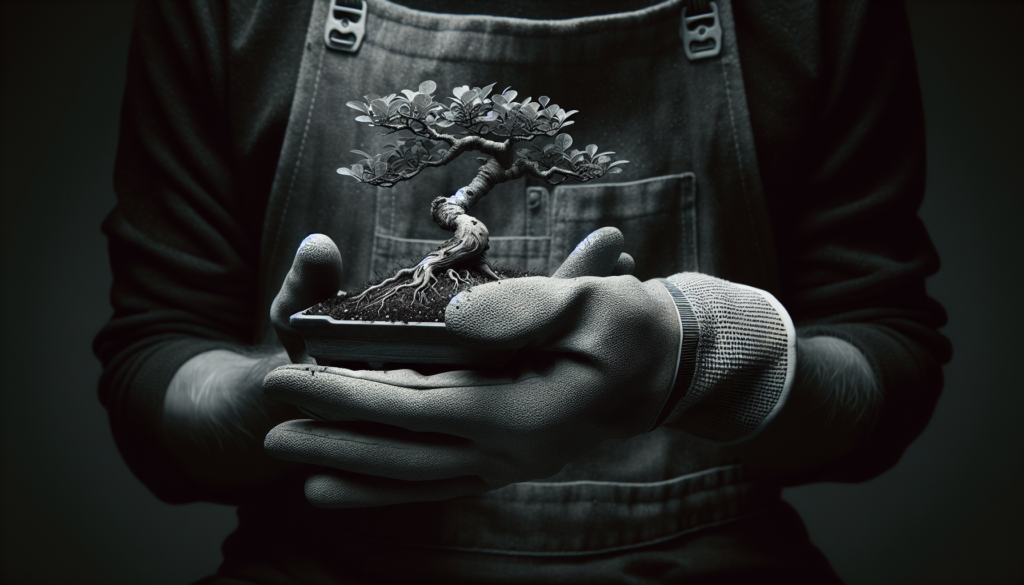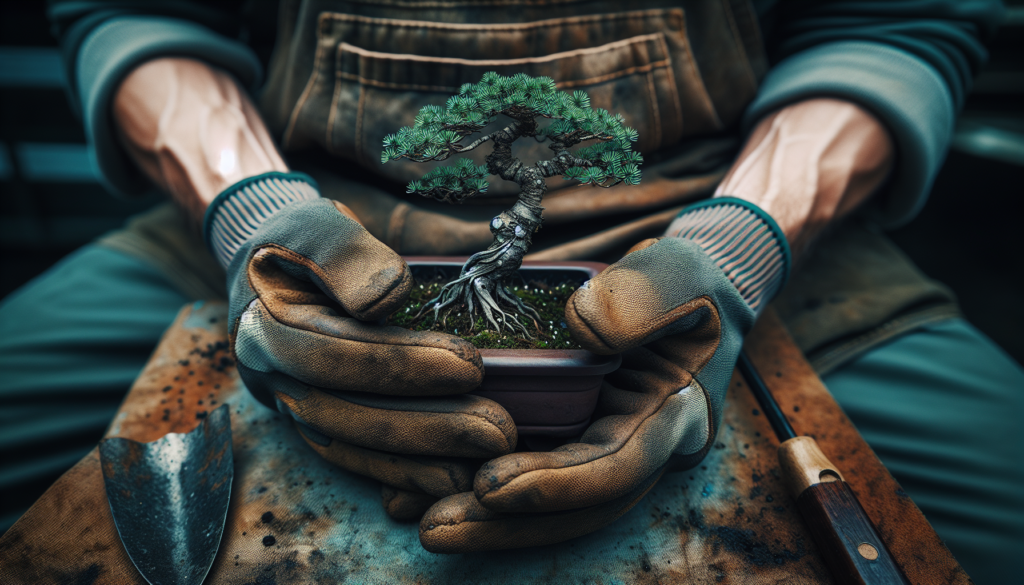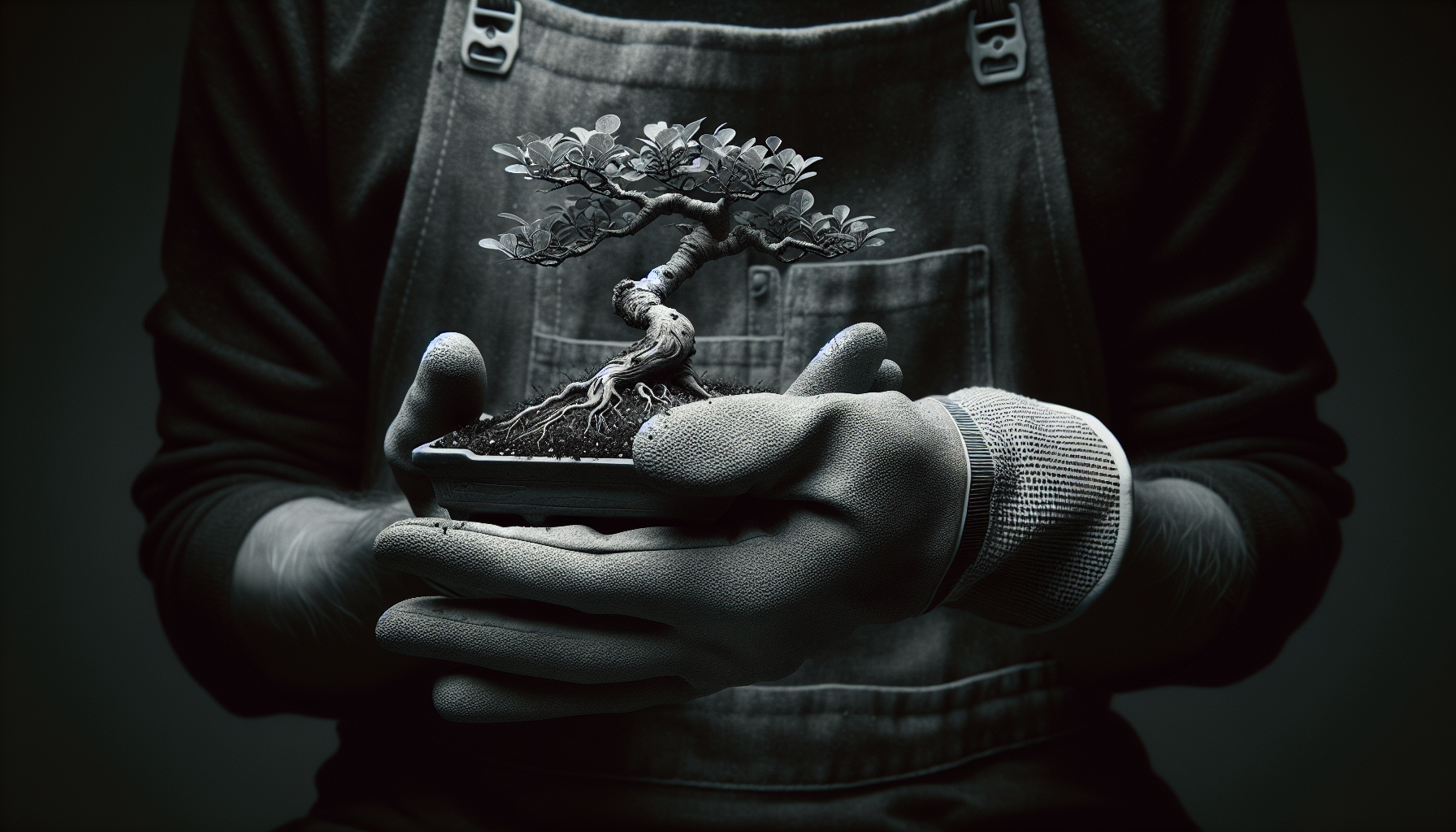Are you a proud bonsai owner looking to ensure the health and resilience of your miniature tree? Knowing when to repot your bonsai is crucial for its overall well-being. In this article, we will explore the perfect timing for repotting your bonsai and provide valuable tips on how to carry out this process effectively. By understanding the signs and following the proper techniques, you can guarantee the longevity and vibrancy of your beloved bonsai.
Understanding the Importance of Repotting Bonsai Trees
Bonsai trees are miniature versions of their larger counterparts, requiring specialized care to ensure their health and growth. Repotting is one of the essential practices in maintaining bonsai trees, as it provides numerous benefits for their overall development. In this article, we will explore the role of repotting in bonsai health and the specific benefits it offers.
The Role of Repotting in Bonsai Health
Repotting plays a vital role in the overall health and growth of bonsai trees. Over time, the soil in which bonsai trees are planted can become compacted, losing its ability to provide essential nutrients and adequate drainage. Repotting helps to refresh the soil, ensuring that the roots of the bonsai receive the necessary nutrients and oxygen.
Moreover, repotting allows for the inspection and maintenance of the bonsai’s root system. By removing the tree from its pot, you can carefully observe the roots, identifying any issues such as root rot or overcrowding. By addressing these problems during repotting, you can prevent further damage and promote the overall health of the bonsai.
Benefits of Repotting for Bonsai Growth and Development
Repotting not only improves the health of bonsai trees but also promotes their growth and development. By refreshing the soil, repotting provides a fresh source of nutrients, allowing the bonsai to thrive and reach its full potential. The improved drainage also prevents waterlogged roots, reducing the risk of root rot and other related issues.
Additionally, repotting helps to control the size of the bonsai tree. By periodically repotting, you can trim the roots and keep them compact, which in turn restricts the size of the tree. This is crucial for maintaining the desired shape and proportion of the bonsai.
Determining the Need for Repotting
Knowing when to repot your bonsai is key to its long-term health and vitality. While bonsai trees generally require repotting every two to five years, several signs can indicate the need for repotting.
Signs that Your Bonsai Needs Repotting
One of the clear signs that your bonsai needs repotting is when you notice the soil becomes overly compacted or retains too much water. Waterlogged soil can suffocate the roots and lead to root rot, which can severely damage the tree’s health. Additionally, if you observe stunted growth or yellowing leaves, your bonsai may be indicating that it needs repotting to access the necessary nutrients.
Root Observations as Indicators
Examining the roots is an effective way to determine if your bonsai requires repotting. If you notice that the roots appear tightly packed or form a solid mass within the pot, it is a clear indication that the bonsai has outgrown its current container. Furthermore, if the roots circle around the edge of the pot, it is a sign that the bonsai may be root-bound and should be repotted to provide room for proper growth.
Checking the Soil Condition
Checking the condition of the soil is another crucial aspect of determining the need for repotting. If the soil feels excessively moist or has lost its ability to drain effectively, it may be time to repot your bonsai. Proper soil condition is vital for the bonsai’s root health and ensures that it can absorb nutrients and oxygen efficiently.

The Right Time for Repotting Bonsai Trees
Timing plays a significant role when it comes to repotting bonsai trees. Although the general rule of thumb is to repot every few years, the specific timing depends on various factors, including the season, lifecycle phase of the bonsai, and species-specific requirements.
Ideal Seasons for Repotting
The ideal seasons for repotting bonsai trees are spring and autumn. During these seasons, the bonsai is in a period of active growth, which enhances its ability to recover and establish new roots. However, it is important to avoid repotting during extreme weather conditions, such as freezing temperatures or scorching heat, as these can cause additional stress to the tree.
The Lifecycle Phase of Bonsai and Repotting
Understanding the lifecycle phase of your bonsai tree is crucial in determining the appropriate time for repotting. Generally, repotting is best done during the early stages of the tree’s growth, before it enters a period of vigorous development. However, it is important to research and understand the specific needs of your bonsai species, as some may require repotting at different stages of their lifecycle.
Understanding Your Bonsai Species-Specific Requirements
Different bonsai species have varying requirements when it comes to repotting. Some species prefer to be repotted more frequently, while others can go longer periods without repotting. Researching and understanding the specific needs of your bonsai species will ensure that you provide the best care and repotting schedule for your tree.
Preparation for Repotting Bonsai
Proper preparation is key to a successful bonsai repotting process. This involves choosing the right bonsai pot, preparing the bonsai tree, and selecting an appropriate soil mix.
Choosing the Right Bonsai Pot
Selecting the right bonsai pot is essential for the overall health and aesthetic appeal of your tree. The pot should be proportionate to the size of the bonsai, allowing enough space for future root growth. Additionally, the pot should have adequate drainage holes to prevent waterlogging and promote healthy root development.
Preparing the Bonsai Tree for the Repotting Process
Before repotting, it is important to prepare the bonsai tree to minimize stress and ensure a smooth transition. Trim any excessive foliage or long branches to reduce the risk of damage during the repotting process. Additionally, watering the bonsai a few days before repotting will help loosen the soil and make it easier to remove the tree from its current pot.
Selecting the Appropriate Soil Mix
Choosing the right soil mix is crucial for the health and growth of your bonsai. Bonsai soil should provide adequate drainage while retaining enough moisture and nutrients for the roots. It is recommended to use specific bonsai soil mixes or create your own by combining ingredients such as Akadama, pumice, and lava rock. Researching the specific soil requirements of your bonsai species will help you create the ideal soil mix.

The Step-by-step Process of Repotting
Repotting a bonsai tree involves a systematic process to ensure the tree’s health and successful transition to its new pot. The process includes removing the bonsai from its current pot, pruning and treating the roots, positioning the bonsai in the new pot, and settling the soil.
Removing the Bonsai from Its Current Pot
Gently removing the bonsai from its current pot is the first step in the repotting process. Carefully slide a root hook or similar tool around the edges of the pot to loosen the bonsai’s root system. Once loose, tilt the pot and carefully lift the bonsai, taking care not to damage the roots.
Pruning and Treating the Bonsai Roots
After removing the bonsai from its pot, it is essential to prune and treat the roots. Inspect the roots for any signs of rot, disease, or overcrowding. Use sterilized bonsai pruning shears to trim any damaged or tangled roots, ensuring clean cuts to prevent further damage. Additionally, treating the roots with a root hormone or fungicide can help promote healthy root development and prevent diseases.
Positioning the Bonsai in the New Pot
Place the bonsai in its new pot, making sure to position it slightly off-centered for aesthetic appeal. The tree should be placed at the same depth as it was in the previous pot, ensuring that the surface of the soil is level with the rim of the pot.
Adding and Settling the Soil
Gently add the prepared soil mix around the bonsai’s roots, ensuring that it fills the gaps and covers the root system evenly. Carefully shake the pot or tap it gently to help the soil settle and eliminate air pockets. Avoid compacting the soil too tightly, as this can hinder water drainage and root growth.
Post Repotting Care
Providing proper care after repotting is crucial to promote the bonsai’s recovery and to prevent further stress or damage. This involves ensuring the right water, light, and nutrition conditions, monitoring the bonsai for any complications, and addressing potential repotting stress.
Providing the Right Water, Light, and Nutrition Conditions
After repotting, it is important to adjust the water, light, and nutrition conditions to support the bonsai’s recovery. Water the bonsai thoroughly but avoid overwatering, as it can lead to root rot. Ensure the bonsai receives the appropriate amount of sunlight based on its species and adjust the location accordingly. Additionally, providing a balanced bonsai fertilizer can help replenish essential nutrients and support healthy growth.
Monitoring Your Bonsai After Repotting
Keeping a close eye on your bonsai after repotting is vital to detect any complications or signs of distress. Monitor the tree’s leaves for any discoloration or wilting, which could indicate root damage or insufficient moisture. Additionally, check for any signs of pest infestation or disease and take immediate action to address the issue.
Dealing with Potential Repotting Stress in Bonsai
Repotting can be a stressful process for bonsai trees, and they may experience some temporary setbacks. It is important to be patient and provide the necessary care and attention during this recovery period. Avoid making any further changes to the bonsai’s environment or pruning excessively until the tree has fully recovered.
Common Mistakes to Avoid During Repotting
While repotting is essential for bonsai tree care, there are common mistakes that should be avoided to ensure the health and well-being of the tree.
Mishandling the Sensitive Bonsai Roots
The roots of bonsai trees are delicate and easily damaged. It is crucial to handle the roots with care during repotting, avoiding excessive tugging or pulling. Be gentle when removing the tree from its pot and use appropriate tools to untangle and prune the roots.
Choosing Inappropriate Pot or Soil
Selecting the wrong pot size or type can have negative consequences on the bonsai’s health. The pot should offer adequate space for root growth, but not be excessively large, as this can lead to imbalance and hinder the bonsai’s health. Similarly, using incorrect soil, such as regular garden soil, can lead to poor drainage and suffocate the roots.
Incorrect Timing and Season for Repotting
Timing is crucial in bonsai repotting, and repotting at the wrong time can cause significant stress to the tree. Avoid repotting during extreme weather conditions, as it can negatively affect the bonsai’s ability to recover. Additionally, ensure that you follow the specific scheduling and requirements of your bonsai species.
Addressing Bonsai Tree Problems Post-Repotting
Sometimes, despite taking all necessary precautions, bonsai trees may experience problems after repotting. Identifying and addressing these problems promptly is crucial for the bonsai’s survival and recovery.
Identifying Signs of Distress or Illness
Keeping a close eye on your bonsai’s overall health is important after repotting. Look out for signs of distress or illness, such as wilting leaves, discoloration, or pest infestation. Promptly addressing these issues can prevent further damage and increase the chances of the bonsai’s recovery.
Dealing with Root Rot or Pest Infestation
Root rot or pest infestation are common problems that may occur after repotting. If you notice any signs of root rot, such as foul odor or dark, mushy roots, it is crucial to take immediate action. Carefully remove the affected roots and treat the remaining roots with an appropriate fungicide. Similarly, if you observe any pests, such as aphids or spider mites, promptly treat the affected areas with organic or chemical pest control methods.
Reviving a Struggling Bonsai Tree
In some cases, a bonsai tree may struggle to recover after repotting. If you notice persistent wilting or lack of healthy growth, additional measures may be necessary to revive the tree. These may include adjusting watering practices, providing supplemental lighting, or seeking advice from experienced bonsai enthusiasts or professionals.
Insights on Repotting Different Types of Bonsai Trees
Understanding the specific needs of your bonsai tree species is crucial when repotting. Each type of bonsai tree has unique requirements and preferences that should be considered during repotting.
Understanding the Specific Needs of Your Bonsai Type
Different bonsai species have varying preferences for repotting. Some trees, such as deciduous varieties, benefit from repotting during their dormant season, while others, like tropical species, thrive when repotted during periods of active growth. Researching and understanding the specific needs of your bonsai species will ensure that you provide the best care and repotting schedule for your tree.
Adapting the Repotting Process According to the Tree Species
The repotting process can be adapted based on the bonsai tree’s species-specific requirements. Different species may require variations in soil type, pruning techniques, or repotting intervals. By tailoring the repotting process to suit the particular needs of your bonsai, you can ensure its health and encourage optimal growth.
Advanced Techniques for Bonsai Repotting
For experienced bonsai enthusiasts looking to take their repotting skills to the next level, several advanced techniques can be employed. These techniques not only aid in the overall health and growth of the bonsai but also allow for creative design and style.
Root Grafting and Layering
Root grafting and layering are advanced techniques used to enhance the root structure and overall aesthetic of the bonsai. Root grafting involves joining the roots of different trees to create a more intricate and elaborate root system. Layering, on the other hand, involves encouraging the growth of new roots on an existing branch or trunk, resulting in a visually appealing bonsai design.
Using Repotting for Bonsai Design and Style
Repotting can also be used as a technique for shaping and styling bonsai trees. By carefully selecting the position and angle of the bonsai’s trunk during repotting, you can create the desired movement and flow in the tree’s overall design. This technique allows for artistic expression and the development of unique bonsai styles.
Long-Term Bonsai Repotting Plan
Developing a long-term repotting plan is crucial for the continued health and development of your bonsai. By considering the future growth and shape of your tree, you can create a repotting schedule that promotes its desired style. Planning ahead allows for a more systematic approach to repotting, ensuring that each repotting session contributes to the long-term vision of your bonsai.
In conclusion, understanding the importance of repotting bonsai trees is essential for their overall health and development. By recognizing the signs that indicate the need for repotting, choosing the right time and season, and following a step-by-step process, you can ensure the success of the repotting process. Additionally, providing appropriate care before and after repotting, avoiding common mistakes, and addressing any post-repotting problems will help your bonsai thrive. By incorporating advanced techniques and considering the specific needs of your bonsai species, you can take your repotting skills to the next level and create visually stunning bonsai trees. Remember, with proper care and attention, your bonsai will flourish and bring you joy for years to come.








